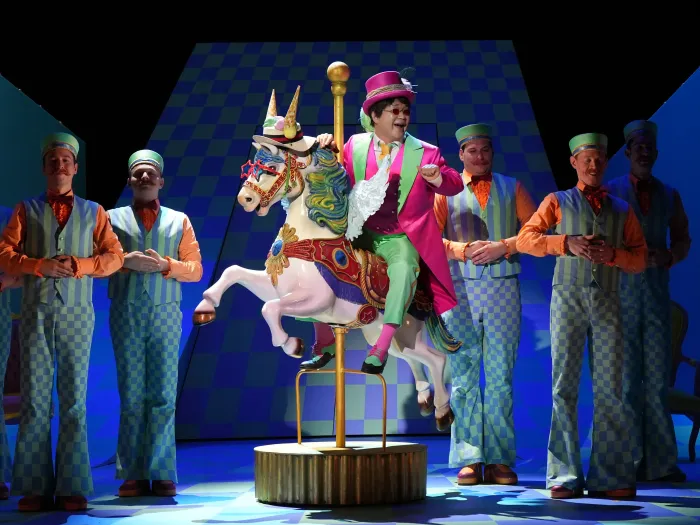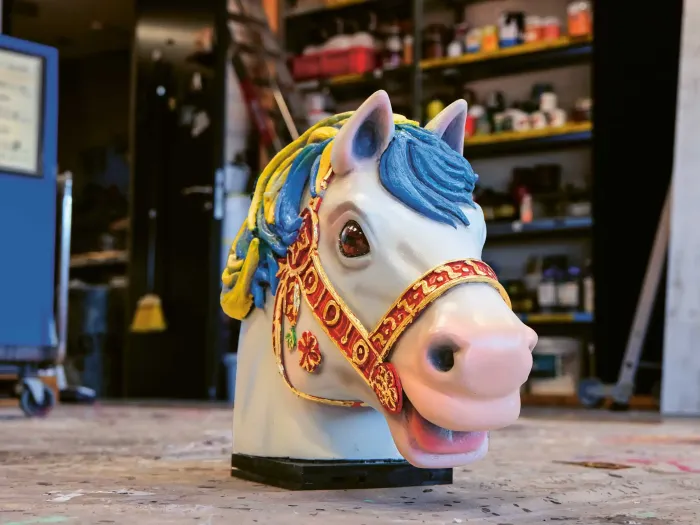Interview by Elisabeth Merklein.
The text was published in Edition 4 (07/25).
Reading time 5 Min.
“A Magical Treasure Chest Full of Surprises”
An opera like a rollercoaster ride: With a delightful eccentric production of Gioachino Rossini’s La Cenerentola, award-winning director Amy Lane returns to Bregenz. In this interview, the British director shares why Cinderella’s journey to self-discovery takes her through a funhouse – and what a group of penguins has to do with that.
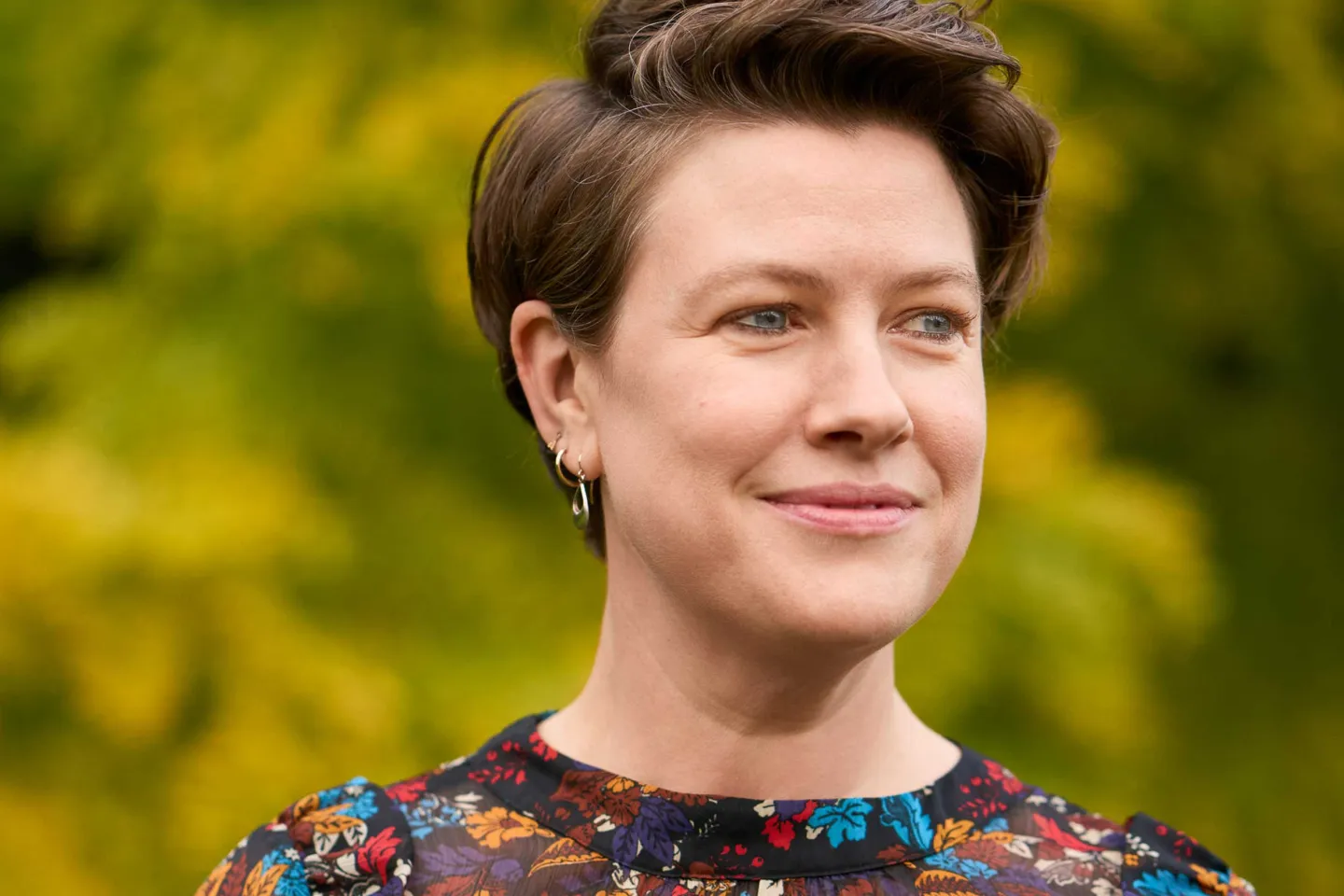
In the fairytale, Cinderella is aided by magical forces – but Rossini’s Cenerentola does without the supernatural. How about your production: how much magic is in it?
Amy Lane: We’re bringing the magic back! And our link to the world of magic is Alidoro, the prince’s tutor. We’ve called him the Clock Master – he is the master of time. When we meet Cenerentola, she has reached a point where she’s simply had enough: enough of her degrading daily tasks, enough of being overlooked. The time for change has come. And our Clock Master Alidoro can freeze time, move it forward and backward – taking control of every character whenever he pleases. We wanted to create a world where he could play: this world is a funhouse, like one at a fairground – a magical treasure chest full of surprises. When you step into a funhouse, the floors might shift beneath your feet, mirrors distort your reflection, staircases lead to the wrong place – all brilliant ways to disrupt everyday expectations. We wanted to set this opera in a place where the unexpected becomes the rule.
What’s your perspective on Cenerentola – this centuries-old female figure – in the year 2025?
Our Cenerentola is meant to be a true fighter. Someone who quietly, but resolutely, thinks: “There must be more – there has to be a way out.” For me, the central challenge is not to portray her as a helpless victim being pushed around, but as an intelligent, strong woman who gets up again and again, brushes off the dust, and walks on determinedly toward change. That doesn’t mean she already has the answers. Maybe she needs someone to help guide her – and that someone is Alidoro. But in the end, it’s Cenerentola who drives and shapes the story.
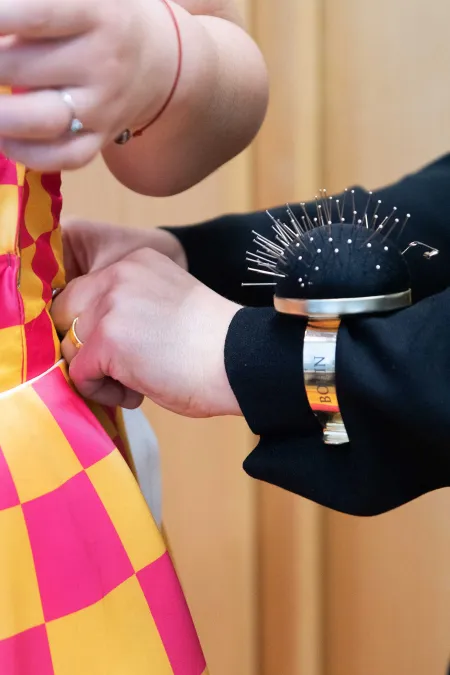
While construction, painting, sewing, and crafting are still underway in the workshops, La Cenerentola will celebrate its premiere on the stage at the Theater am Kornmarkt on 12 August.
Which scene are you most looking forward to?
I’m really looking forward to the Act I finale – the dinner table scene when everyone is called to the ball for supper. It’s going to be a table like no other – good luck eating on that one! They are not just nibbling on cotton candy, that’s for sure! I’m also very excited to see how Alidoro takes control of the characters – in the sense that they lose control of their own bodies and movements. And we have a fantastic eight-member choir: for me, it’s two barbershop quartets working for Alidoro, moving a bit like a group of penguins. I hope the audience leaves the performance with slightly sore cheeks – from smiling so much. That’s my goal.
We wanted to set this opera in a place where the unexpected becomes the rule.
How much inspiration do you as a director draw from Rossini’s music?
One hundred percent! Everything comes from the score. I’m lucky in that regard – I am a trained singer myself, so I feel at home in the score. Every artistic decision I make comes either from a first impulse in the libretto or from something that absolutely floods me from the orchestra. And La Cenerentola has this special energy, this electric charge. Right from the start, the fuse is lit and off we go.
There’s hardly time to catch your breath – you’re just sitting there thinking, “Goodness, what’s next?” That’s also a strong reason why we chose to set the story in a funhouse – because you never really know what’s coming. And without giving too much away: it really feels like a rollercoaster ride. That’s all I’ll say!
Right from the start, the fuse is lit and off we go.
Do you have a favorite piece from La Cenerentola? A favorite aria?
Oh, that’s a tough one! It’s hard not to say “Non più mesta.” You’ve made it through the entire opera and then comes this fantastic firework of a finale. But I also love the overture – it’s like unwrapping a package, layer by layer. And of course, Ramiro’s aria “Sì, ritrovarla io giuro” – what a showstopper! Yes, I’m sticking with the classics.

The opera is performed by rising talents from the Opera Studio. What do you focus on when working with these young singers?
The most important thing is to create a platform where these exceptional young artists can truly thrive. We want to give them the best possible conditions – vocally and dramatically. The set design plays a key role in that: our set, for example, has walls that reflect the sound really well, but at the same time, it’s a space that fosters creative storytelling. I hope we’ve created a playground where we can experiment and go wild together. I’ve already heard that the masterclass in March was a great success. Now I can’t wait to hear those voices myself!
This isn’t your first time at the Bregenzer Festspiele. In 2011 and 2012, you worked as assistant director on Umberto Giordano´s Andrea Chénier on the Seebühne, and in 2013 on André Tchaikowsky´s The Merchant of Venice at the Festspielhaus. How does it feel to return to Bregenz?
I’m absolutely thrilled to be back. Those two productions were such formative experiences for me – they helped me grow so much as a professional. That’s why it means so much to return now as a director. What a place to spend the summer!
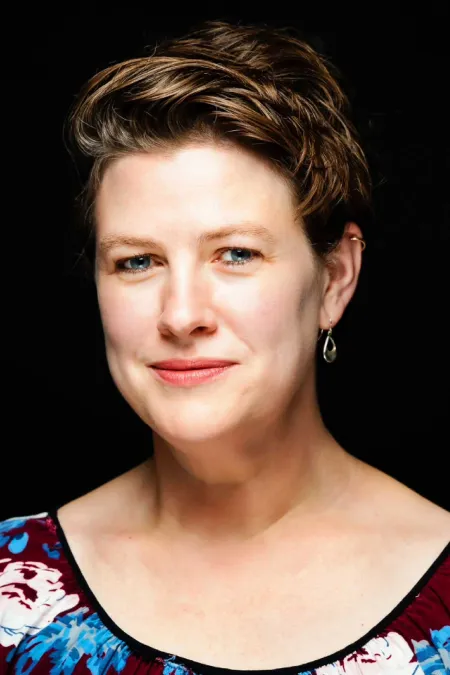
British stage director Amy Lane is in high international demand. She recently directed for the Canadian Opera Company in Toronto, Longborough Festival Opera, and Savonlinna Opera Festival. She served as Head Staff Director at the Royal Opera House in London for five years and has been the Artistic Director of the Copenhagen Opera Festival since 2019.



